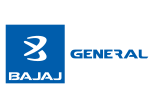Roth IRA - Individual Retirement Account - Features & Benefits
A Roth IRA is a particular kind of Individual Retirement Account. Your money increases in value with a Roth IRA, which permits tax-free gains and withdrawals throughout retirement. Due to their adaptability and possible tax benefits, they are a well-liked retirement savings alternative. Since Roth IRAs fundamentally give flexibility and tax effectiveness while saving for retirement, they help build an inheritance for a comfortable retirement. But there are a lot of factors, eligibility criteria, and advantages to a Roth. Learn more about Roth IRAs, its features, and benefits. This article will provide in-depth detail.
Table of Contents
An Introduction to Roth IRA
Working individuals can save and invest money for retirement through a Roth IRA (Individual Retirement Account). It is the most beneficial pension plan for tax-free interest, including return benefits. Withdrawals and contributions are flexible with Roth IRAs. As a result, the account holders may prolong their tax-free savings growth as long as they choose. Although there are no tax advantages for the current year, your investment and profits can increase tax-free. After you reach the age of 59 and a half, you will be able to withdraw them without paying taxes or penalties. However, the account must remain open for five years.

The differentiating factor between traditional and Roth IRAs is how they get taxed. It gets recognised as one of the best tax-advantaged retirement plans out there. Moreover, you get to create a Roth IRA account in your spouse's name. It benefits married couples by allowing them to quadruple their savings for their eventual retirement.
Here is How it Works
You make after-tax contributions to a Roth IRA. It indicates that contributing to the account has no immediate tax advantage. Once you have funds, you may use the Roth IRA to make investments. Those investments are probably going to provide a return over time. The Roth IRA's actual worth becomes apparent at that point. Previously taxed money can get deposited into a Roth IRA. Once it has grown, you are not required to cover additional taxes when you withdraw it after retiring.
You can fund a Roth IRA from various sources:
- Regular contributions
- Transfers
- Spousal IRA contributions
- Conversions
- Rollover contributions
Features of Roth IRA
- Roth IRAs allow for adjustable contribution amounts. Contributions are welcome at any time.
- It has options including individual Roth IRAs and spousal Roth IRAs (in the spouse's name).
- In this case, the spouse must be nonworking. The revenue of the investors gets used to fund their accounts.
- Your residual income after tax deductions should get used to making contributions.
- There is a time limit for contributions. It must get submitted by the deadline for the current year's tax filing.
- There are no prerequisites for distributions to begin.
- The withdrawal period gets locked in for five years.
- Withdrawals are allowed without incurring penalties for acquiring your first house or paying for further education.
- It is completely free of taxation if you withdraw money after 59 and a half years. However, there is a 10% penalty if you do it before 59 and a half years.
- You receive tax benefits since contributions, earned income, withdrawals, etc, are tax-free.
Benefits of Roth IRA
The Roth IRA is an attractive option for retirement savings plans due to its many advantages. Here are Roth IRA's main benefits:
-
Tax-Free Growth and Withdrawals
The fact that your investments grow without taxation is one of the greatest advantages of a Roth IRA. Plus, you need not worry about reporting investment earnings. As previously indicated, you are not subject to any tax or penalty when you withdraw funds from your Roth IRA, including contributions and profits. However, you must be 59 and a half years or older. Additionally, the account should be open for at least five years.
-
Lack of Required Minimum Distributions (RMDs) Criteria
Account holders of Roth IRAs are not required to start taking Required Minimum Distributions (RMDs) at a specific age. It lets you avoid getting compelled to withdraw your funds and let it grow tax-free for as many years as you choose.
-
Flexible Withdrawals
With a Roth IRA, account holders can withdraw their eligible contributions whenever they want, tax and penalty-free. A Roth IRA does not have a required minimum distribution (RMD) during its lifetime as a traditional IRA does. It is wise to contribute to your Roth IRA and allow compounding to do its work when your investments lead to returns.
-
Additional Tax Credits and Diversification
The Retirement Savings Contribution Credit, often known as the Saver's Credit, may be available to investors who make permissible payments to an employer-sponsored Roth IRA. Your retirement tax exposure can get diversified by using a Roth IRA. As a result, you will be able to access both taxable and tax-free earnings streams. It can help you minimise your tax burden as you approach retirement.
-
Roth IRA Conversion
To implement this method, you would contribute to a regular IRA. It gets no income restrictions—in a non-tax-deductible manner. Then, utilising a Roth conversion, you would transfer the funds into a Roth IRA. The Roth conversion is irreversible. So, before taking any action, you might want to speak with your financial adviser and a tax expert to learn about the tax repercussions.
-
Beneficiaries Pay No Taxes
Your beneficiaries—those who get your Roth IRA—will get obligated to make RMDs. However, as long as the account is open for five years, they won't get required to pay income tax on any withdrawals. A Roth IRA can also be advantageous for estate planning since you can choose beneficiaries who will receive the account tax-free.
-
Spousal Roth IRA
You can create a second Roth IRA plan for your unemployed spouse using a spousal Roth IRA. It is an advantageous tool for married people who wish to maximise their savings for retirement and benefit from the tax advantages of a Roth IRA.
Investing in a Roth IRA
Once you have the necessary income for contributions to the account, making investments in a Roth IRA becomes simple. Before choosing a Roth IRA provider, consider if you want to engage in active or passive investing. Use a robo-advisor and passive investing if you don't like the concept of continually monitoring the trading and stock market. They'll handle all the work, including selecting and monitoring investments per your investing objectives. Opening a standard Roth IRA account is the better alternative if you like managing your assets, buying individual stocks, or using sophisticated investing techniques.
If you prefer an active approach to investing, you may use your Roth for investments in varied assets. Some of them are:
- Individual stocks or bonds.
- Mutual funds.
- Index funds.
- ETFs.
To Summarise
You can contribute after-tax income and increase your investments tax-free with a Roth IRA. It can be the best choice for people who wish to put money away for retirement and possibly reduce their tax obligations. Holders of Roth IRAs get the opportunity to accumulate a significant retirement fund that might supply tax-free earnings in the future. However, they are required to make after-tax contributions to the plan. You can withdraw money tax-free and without incurring a penalty after you are 59 and a half years old.
FAQs
Q: Why do you need to consider a Roth IRA?
A: If you anticipate being in a greater tax band in the future, a Roth IRA may be the best way to save money because of additional benefits such as tax-free withdrawals. Not everyone will qualify for a Roth IRA, though, as there are certain income restrictions for starting one.
Q: How do you differentiate a Roth IRA from a traditional IRA?
A: The tax treatment of a Roth IRA and a regular IRA is the fundamental distinction that separates them. Traditional IRAs offer a tax credit when you make contributions, while Roth IRAs allow tax-free withdrawals. Therefore, consider opening a conventional IRA for a quick tax advantage.
Q: Which one should you invest in, a 401(k) or a Roth IRA?
A: When deciding between a Roth IRA and a 401(k) retirement plan, there are several factors to consider. When you put money into a Roth IRA, you can make money tax-free in retirement. 401(k)s operate oppositely. Compared to 401(k)s, Roth IRA contribution limits are frequently lower. Moreover, 401(k)s sometimes have higher costs, lower investment alternatives, and minimal payouts.
Q: What are the eligibility criteria for a Roth IRA?
A: Here are the Eligibility requirements you should be aware of:
- You must have a good income for contributions to a Roth IRA plan.
- There is no upper age limit for Roth IRA contributions.
- You must submit a combined tax return if you have a spousal Roth IRA.
- The maximum Roth IRA contributions allowed for the spousal Roth IRA must exceed the investor's income.
Q: What are some of the drawbacks of a Roth IRA?
A: The following are some drawbacks of a Roth IRA:
- You cannot immediately take advantage of any tax benefits as they are provided at the point of withdrawal.
- A Roth IRA requires a tiny yearly contribution compared to a 401(k).
- Additionally, there are income restrictions for Roth IRA contributions.
- There is no early withdrawal provision in a Roth IRA plan.




























